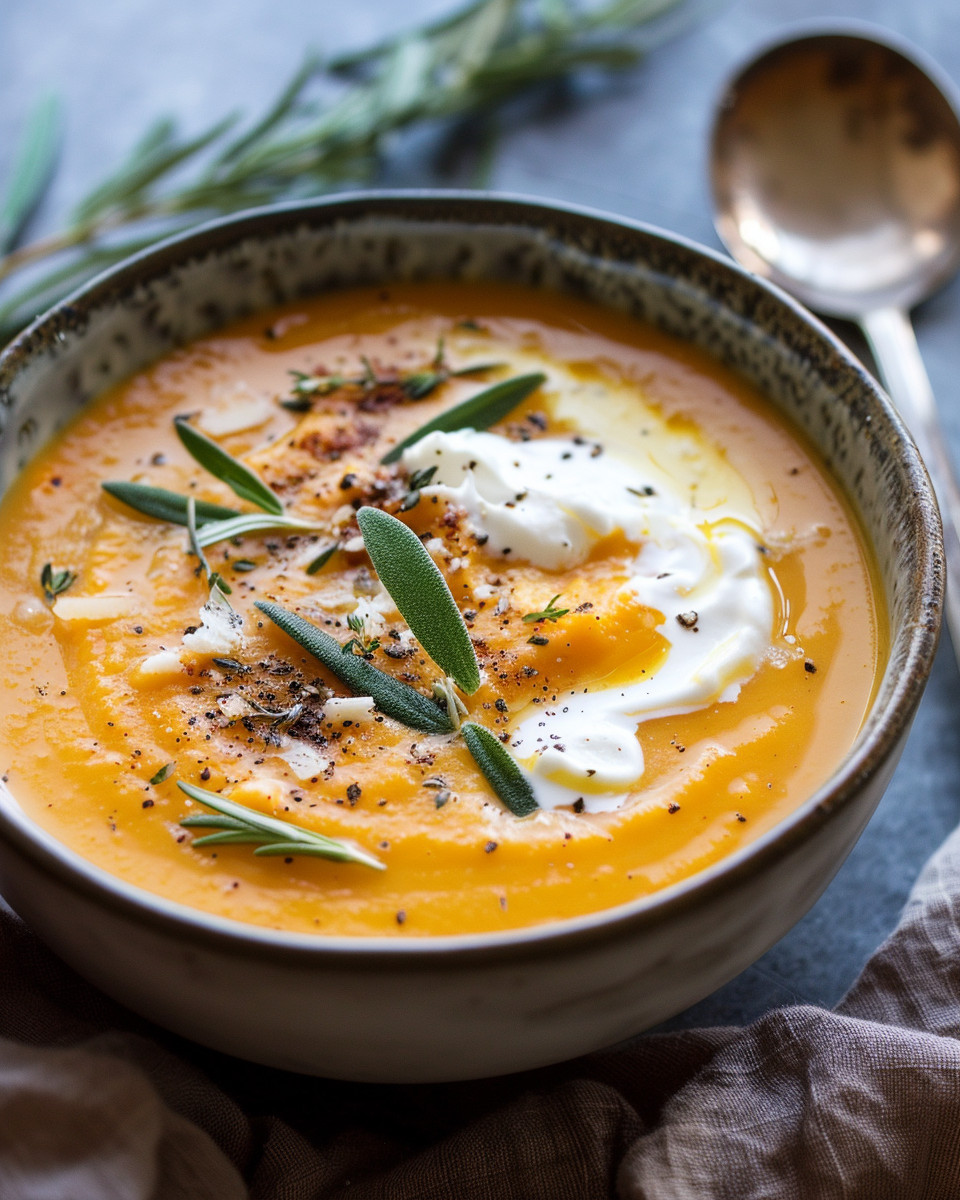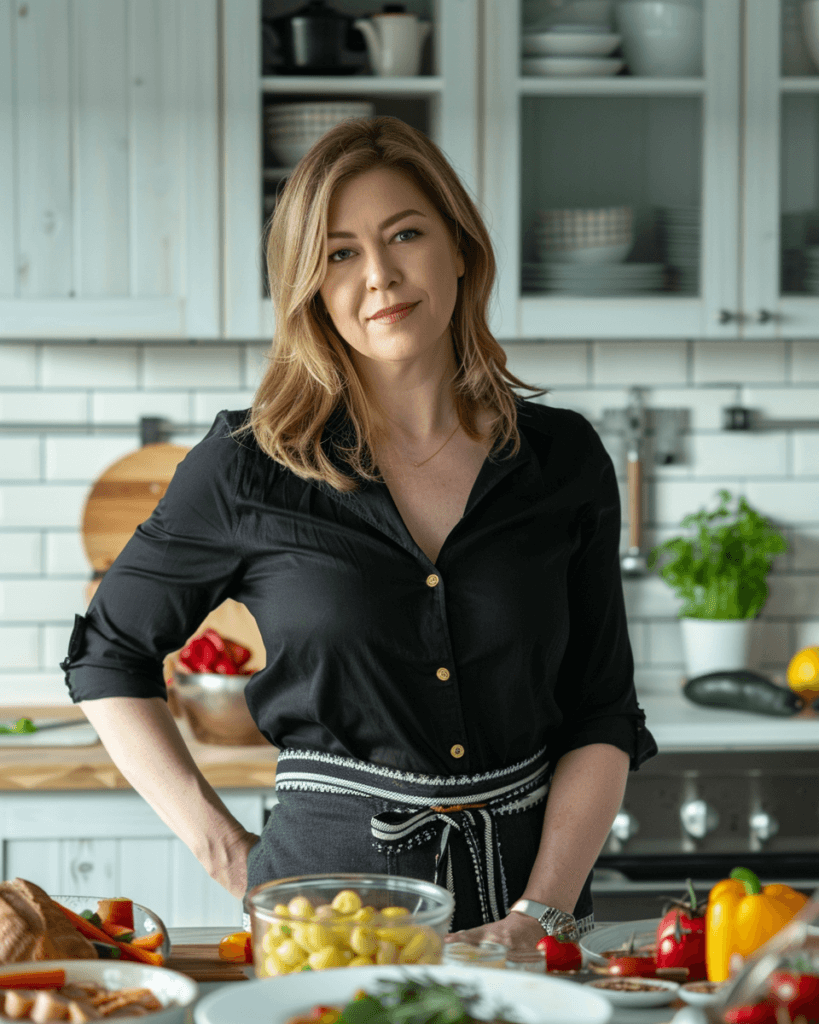Sudden craving spark moment
You ever gotten that kind of craving that just hits you outta nowhere? Like one minute you�27re chillin’, and the next thing you know you�27re thinking about something warm and cozy to eat. That was me last week when I suddenly remembered how much I love a good butternut squash soup. It�27s that perfect combo of smooth sweetness and those little herbs that just make you feel all snug inside.

Since I didn�27t wanna wait forever stirring pots on the stove, I grabbed my trusty pressure cooker. Yessir, nothing beats the hissin�27 sound of that valve doin�27 its thing while the flavors get all mingly real quick. And you better believe, I was watching that steam to know when to do a quick release or let it sit to build broth depth.
It�27s funny how squash soup feels like fall in a bowl, right? The warm ginger with fresh rosemary and sage? Oh man, you can almost smell fall leaves just by cutting into the squash. I remember poking that pressure valve impatient like a kid waitin’ to open gifts but once you get that first sip, dang, it�27s totally worth the wait.
Why pressure wins hearts bullets five to seven
First off, pressure cookers save you crazy amounts of time. Instead of sittin’ there for hours, you get that tender squash and infused herbs in under half an hour. You remember that gurgling sound? That�27s the cooker telling you flavors are marrying fast.
Second, the steam cousins like quick release and slow release let you control the texture. Quick release means you stop cooking right away �2D great if you like a bit of texture still there. Slow release lets the broth deepen and thicken a bit more, which is especially awesome for this kind of soup.
And another thing, pressure cooking seals in nutrients better than just simmering. Those veggies keep their bright colors and fresh tastes while you’re not babysitting the pot all day. Heck, it’s the closest you get to perfect cozy soup without all the fuss.
For perfect cozy meal ideas, check out our Hearty Crockpot Lentil Soup and explore smoky soup recipes that bring bold flavor depth to your bowl.
Ingredient kit rundown eight to ten items
- Butternut squash �2D Grab about 3 pounds, a medium or large one works best. If you ain�27t sure, try to weigh it when you buy.
- Yellow onion �2D One large, chopped fine not too chunky.
- Garlic cloves �2D Three, chopped for that punch.
- Fresh sage �2D About a tablespoon, chopped nice and fresh.
- Rosemary �2D Half a tablespoon minced. I don�27t use rosemary a lot usually, but it�27s perfect here.
- Ginger �2D One teaspoon fresh grated, warms up the whole soup.
- Extra-virgin olive oil �2D Two tablespoons, adds richness without heaviness.
- Vegetable broth �2D Around 3 to 4 cups, this keeps it light and vegan without needing any dairy or nuts.
- Salt �2D Half a teaspoon sea salt, but remember to taste and adjust later too.
- Freshly ground black pepper �2D A few grinds to start and more if you want peppery kick at the end.
If you wanna serve it right like me, grab some crusty bread and maybe pepitas and parsley as topping buddies. Nothing fancy needed, just simple toasty goodness waiting for that soup dip.
Step timeline inside the pot six to eight
Okay, first you heat up those two tablespoons of olive oil in your pressure cooker on medium heat. I remember watching that oil get shimmering, feeling like you�27re about to start something special. Toss in the chopped onion with salt and pepper and let it sweat soft for about 5 to 8 minutes. You�27re lookin�27 for that smell of onions turning sweet and translucent �2D that�27s your signal to move on.
Now add your cubed butternut squash and stir it around for about 8 to 10 minutes. You wanna see those chunks start to soften and get that light golden color without browning them too much, just enough to bring out their natural sugars. Stir occasionally so the steam cues tell you it�27s heating evenly.
Next up, toss in your garlic, sage, rosemary, and ginger. Stir these aromatics through for another minute real quick to get them waking up. Then pour in 3 cups of vegetable broth, just enough to cover a bit of the veggies, but not drown �27em. Snap that lid on, seal the vent, and set it to high pressure for about 8 minutes.
When those minutes tick down, go for a quick release so you can dive into blending or slow release if you want deeper broth depth and a bit more mellow flavor. Just remember the cooker hissin�27 lets you know when the pressure�27s dropping. Remove the lid carefully, give it a good stir, and check if your squash is tender enough.
Pour the soup batches into your blender. You might need to work in two or three batches �2D that�27s cool. Blend until smooth, and if it�27s too thick for your liking, add a bit more broth and blend again. Season with more salt and pepper to taste.

Serve it up with a sprinkle of parsley or pepitas and that crusty bread on the side. You�27ll wanna savor each spoonful of that creamy, cozy soup you just whipped up fast, thanks to your pressure cooker and steam buddy tricks.
Shortcut valve tricks three to five
Listen, the valve is a tough little guy but knowing how to use it right can save you from overcooking or soggy squash disasters. When you hear that whistle start rising, try slow release if you want broth depth built in. Let the pressure drop by itself for 5 to 10 minutes to soak those flavors longer.
If you�27re in a hurry or want the soup bright and fresh tasting, quick release is your pal. Flip the valve open careful, listen for the hiss, and let out the steam fast so the cooking stops on a dime.
One trick I use is to give it a little shake after slow release just to wake up the ingredients. It kinda redistributes the heat and flavors before you hit the blender button. Just remember the steam cues �2D don�27t rush opening the lid, you�27ll lose some of that hearty warmth otherwise.
First spoonful story
Alright, you remember that first spoonful moment? The very second you get a hot sip of the soup into your mouth all that wait suddenly feels worth it. The butternut squash is silky smooth, think velvet on your tongue, and the herbs give it this fresh, earthy hug while the ginger adds this cozy warmth underneath.
That little zing from fresh black pepper sneaks in just right too, and don�27t get me started on how the crusty bread just loves to soak up any leftover broth. I swear sometimes I�27m just eatin�27 the bread alone with little drips all around!
It�27s funny, but every time I eat this soup, I feel like I�27m wrapped up in my favorite blanket on a chilly day. You gotta try to listen to your steam cues to nail the thickness just right. Too much broth and it gets thin, too little and your blender works overtime. But dang, when you get it just right? That first spoonful tells you all you need to know.
Leftover jar guide
Got leftovers? Lucky you. When you pack this soup in jars, try to leave about an inch of space from the top to let the soup breathe a bit when it cooled down. I like using glass jars because you see the creamy orange and that�27s kinda exciting even before you heat it up again.
When you reheat, you can either use the microwave or warm it gently on the stove with a quick release type stir here and there. Don�27t forget to watch for those steam cues so it doesn�27t boil over or dry out.
You can jazz up leftover servings by throwing in some fresh chopped parsley or even pepitas for crunch. If you feel adventurous, a drizzle of olive oil or a squeeze of lemon can brighten it too.
Oh, and speaking of storing, keep those jars in the fridge and try to use the soup up in about 3 to 4 days. The freshness fades fast but that lovely aroma lingers if you treat it right!
Feel good send off with six FAQs
- Can I use an immersion blender instead of a regular blender?
You bet! Just let the soup cool a little and blend right inside the pot. It�27s less cleanup and works great if you don�27t wanna pour hot soup in batches. - What if I don�27t have fresh herbs?
You can use dried versions but halve the amounts because they tend to be stronger. Just add them early when s�e2�80�99a�e2�80�99ut�e2�80�99ing so they soften up inside the pressure cooker. - Can I freeze leftover soup?
Absolutely. Pour into freezer-safe containers but leave some space since soup expands when frozen. Thaw overnight in fridge and warm gently before serving. - What�27s the difference between quick release and slow release?
Quick release vents steam fast, stopping cooking right now. Slow release lets steam drop naturally which gives the soup more time to thicken and flavors to deepen. - How do I know when the soup is done?
Scoop out a chunk of squash after pressure cooking. If it�27s soft enough to mash with a fork, you�27re golden. If not, seal back up and cook a few more minutes with a quick release after. - Can I add other veggies?
Sure thing! Carrots, celery, or sweet potatoes all play well here. Just remember to adjust cooking time slightly and keep your eye on those steam cues.


